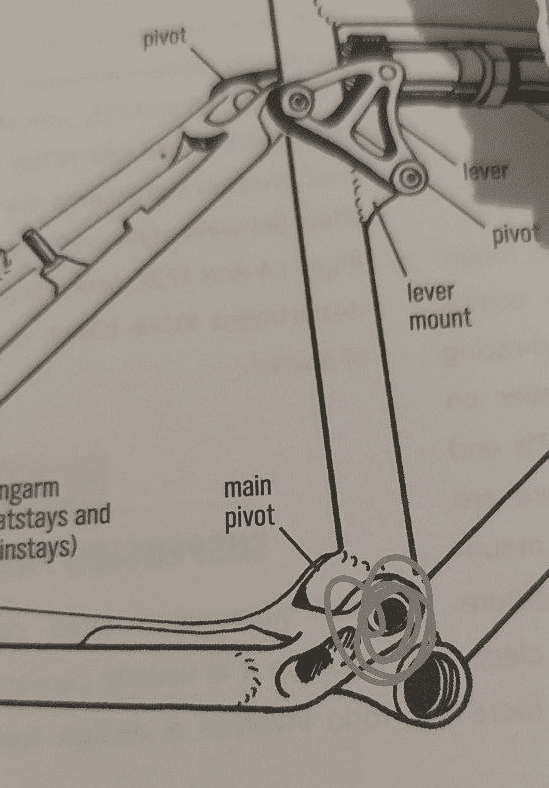Rear Suspension
1020-10-02T00:00:00.000Z
 https://www.goodreads.com/book/show/14093.Zinn_the_Art_of_Road_Bike_Maintenancer
https://www.goodreads.com/book/show/14093.Zinn_the_Art_of_Road_Bike_Maintenancer
Single Pivot
A single pivot suspension is one in which there is only one pivot point connecting the rear wheel to the main frame of the bike. There may or not be other pivots on the bike, but fulfilling the aforementioned condition makes it a single pivot suspension. A bike might have a four bar suspension and still be single pivot. A bike might have different linkages connecting the rear triangle to the shock and still be a single pivot. Such linkages allow the progressivity of the suspension to be optimized. Single pivot bikes in which the shock is directly connected to the rear triangle, while taking advantage of the simplicity of the design, create a regressive suspension rate, which depending on the type of riding and the force of the impacts, may not be optimal. An advantage of a classic single pivot bike in comparison with a four-bar single or multiple pivot design is the rigidity that it’s possible to attain with a single structure that’s connecting the rear wheel to the frame. Some designs try to combine this advantage with a more progressive suspension rate by using the aforementioned extra linkages between the rear triangle and the shock.
Another challenge of single pivot bikes is the “brake jack”, or the influence of braking on the behaviour of the rear suspension. A four bar design allows this problem to be tackled by connecting the rear brake to the seatstays. For other designs, a floating brake mount has been used on some downhill oriented bikes, by means of a pole that connects the rear brake mount to the frame, as a sort of four-bar system for the brake alone. This type of system has mostly gone out of use due to the extra weight it brings, as brake jack is not considered as an especially significant problem.
https://en.wikipedia.org/wiki/Bicycle_suspension#Rear_suspension